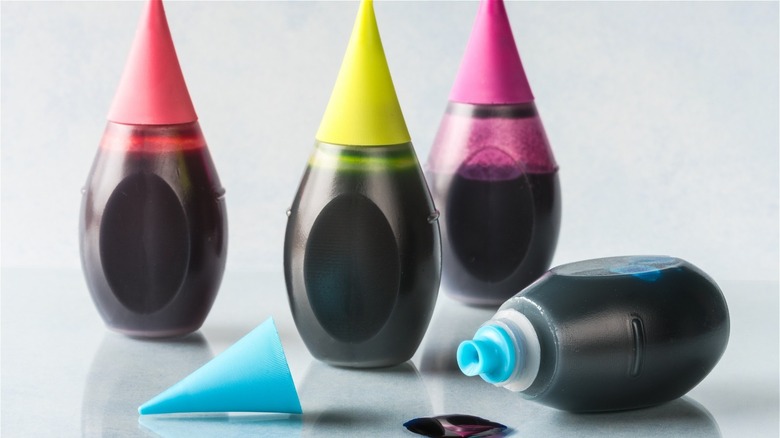Is Red Food Dye Really Made From Beetles?
If you look at the ingredients list on a bag of chips, a bottle of soda, a can of soup, or just about anything processed and packaged, the chances are you'll see food dye as an ingredient. The FDA explains that the reasons manufacturers use food-grade dyes vary, but oftentimes it's to make food look more appealing or even to help consumers determine the flavor of a food or the differences between food items.
While the ingredients behind most food dyes go largely unnoticed in the realm of consumerism, red food dye is one notable exception. Even though the FDA approved it in select quantities for use in food, some consumers believe the consumption of certain red food dyes is linked to migraines, allergies, neurological issues, and more. Further, others have heard rumors about an ingredient in red food coloring that they would prefer not to consume. That ingredient? Cochineal beetles.
What really gives red food dye its color?
Lots of additives can give food a vibrant red color, and it's true that cochineal beetles (usually noted as carmine on product labels) can be part of that equation (via Inverse). For strict vegetarians, the addition of a beetle by-product can be a serious issue, but for others, it's a safe food that won't cause any complications. But if you're worried about coming across insects in your next meal, there's a bit of good news. Another type of red food dye we commonly consume, Red 40, is actually a synthetic dye that's free from insects.
However, certain manufacturers and companies do still use natural, beetle-derived red food dye in their products. In 2012, Starbucks came under fire when it was discovered they were using cochineal beetles in their Strawberry and Creme Frappuccino. Though the popular coffee chain has since taken the controversial ingredient out of the sweet drink, there are plenty of other products at the grocery store that contain carmine, including household staples like yogurt, ice cream, canned preserves, pastries, and more.
Of course, eating insects is nothing new. Entomophagy, or the eating of insects by humans, is a long-standing tradition of sustenance that over two billion people still practice today. For the average American, though, beetles are typically not on the menu. As the carmine controversy shows, it's clear that Americans have a long way to go before they're comfortable eating insects outright.

